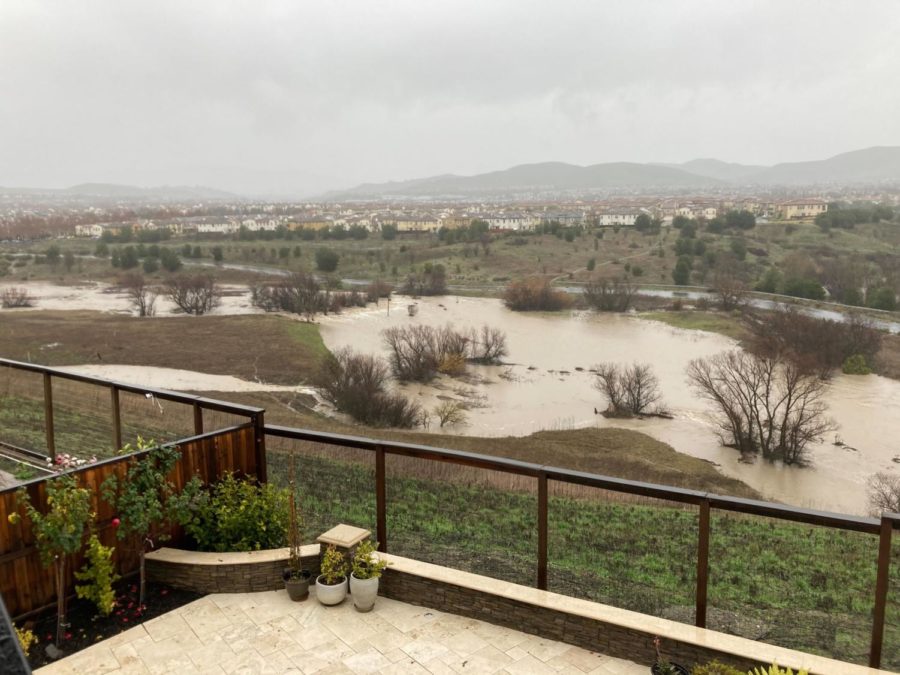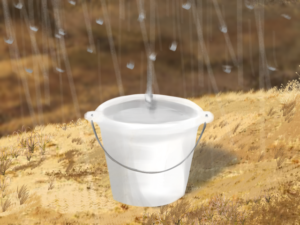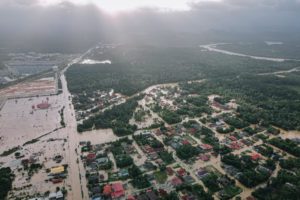California’s recent megastorms are more than just an outlier- it’s a pattern
Arushi Chanda
Many rivers and creeks across the state are flooding and spreading into towns and communities.
January 31, 2023
For the first time in decades, California has been hit with multiple fierce winter rainstorms. Creeks and ponds that have been dry all year long filled up and many residents across the state are being issued flood warnings. Highways fill with potholes, and close down due to landslides and rockslides. The death toll from flooding rises to 20 in California.
While these megastorms provide plenty of water to relieve California’s drought, most of this water is stored in reservoirs and underground aquifers, which fill up quickly. California’s main water storage is in snowpacks– meaning, the megastorms do nothing to alleviate the drought in the long term.
“We still have long-lasting depletion of our aquifers. And that takes a lot of time. It’s not just one winter storm to take care of that,” Heida Shaw, Dougherty’s AP Environmental Science teacher, said.
Not being able to capture the rainfall to help California’s drought is only an insignificant aspect of this year’s storms.
“Although we love getting the water because we’re in a drought, our infrastructure is not built to deal with this much water at once,” Lisa Damerel, Contra Costa Resource Conservation District’s Watershed Conservation Manager, said.
When years of drought result in dry soil, the ground will act like concrete, so the following years of severe storms will ultimately just allow water to flow right off our terrain, causing floods and landslides.
“The fact that this [storm] happened so quickly was a huge issue. Had this amount of rain happened over the course of three months, the ground would have become saturated and then stopped, instead of overflowing and flooding,” Shaw said.
Multiple studies have shown that permeable roadways will allow for runoff to settle down into the ground itself, while also including benefits such as greener infrastructure as well as weakening the urban heat island effect.
Creeks naturally have meanders, which allows for flood space during rainy seasons, but California has built infrastructure up to the very edges of the creeks, increasing the danger of erosion and runoff, which causes buildings to collapse.
“You don’t hear about the creeks if things are okay. You hear about it when people are having flooding or they see erosion or they see trash or whatever,” Damerel said.
As the rainy season comes to an end, the effects of flooding haven’t been washed away yet. Potholes splotch highways and roads and the remnants of mudslides and landslides are being cleared from houses.
“Hopefully, people will be thinking more about how we can make our infrastructure and our treatment of creeks better and more resilient to these kinds of storms, because we’re only going to be getting more,” Damerel said. “It’s just science.”
Whether that means nature based solutions such as horizontal levees constructed to help shorelines become more resilient to flooding, or changes in infrastructure, these recent megastorms and the destruction it brings go hand-in-hand with a byproduct of climate change – sea level rise.
According to a New York Times study, peak rainfall in Los Angeles in 2016 during a rainy winter averaged around 0.4 inches per hour. With climate change impacting our weather patterns, the predicted rainfall in 2072 would reach 1.9 inches per hour.
“Models have predicted this to happen. But just because models have predicted it doesn’t mean that we can say that it’s climate change [affecting the weather]. It’s correlation, not causation,” Shaw said. “But if it walks like a duck and talks like a duck, it’s probably a duck.”
Although there is no factual evidence that these megastorms are linked behind it, the science behind this phenomenon is rooted from warming atmospheric temperatures. The energy in the sky increases from the heat, resulting in a more drastic temperature exchange during storms, causing them to be more violent and destructive.
Even still, climate change is a shadowing problem for our earth, and it is increasing the risk of mega storms and floods in California’s future.
According to Scientific American, geological evidence has revealed that California is hit with devastating floods every 200 years, just from rainfall. The last occurrence was in 1861.
“Many people have been talking about having a megastorm in California for about 10 years. We’ve had other floods like this before, and we’re going to be seeing more years where we have more severe drought and more years where we have these mega floods,” Shaw said.
While there is nothing to help prevent future storms, there’s plenty to do to reduce the impact they make when they do come. Megastorms and floods are only some of climate change’s most devastating effects.
“We’re seeing this kind of thing all around the country too – severe storms, severe droughts, the highest temperatures in some areas, particularly in Europe. We are all seeing the signs, so it’s whether or not we want to take responsibility for it,” Damerel said.






